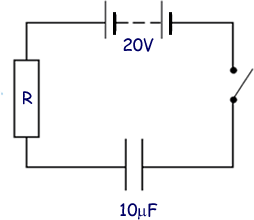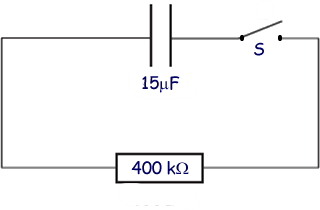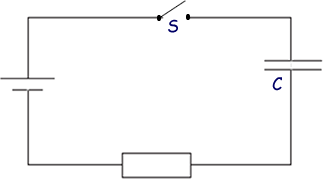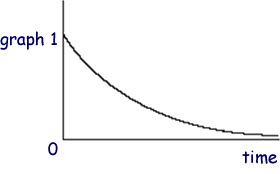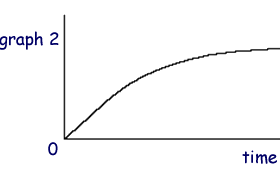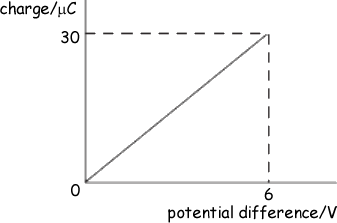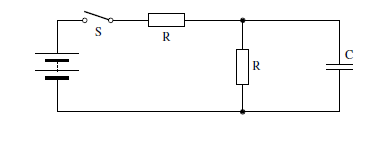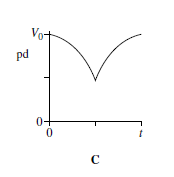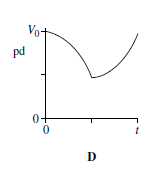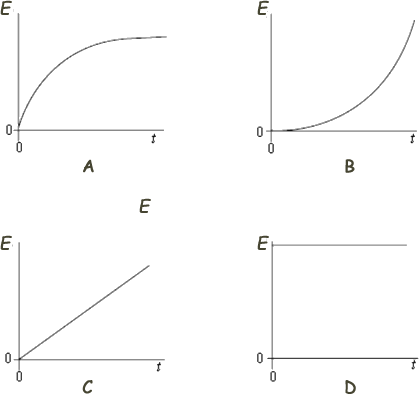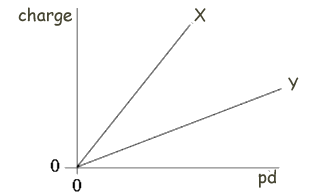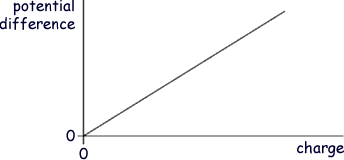Capacitors - Multiple Choice Q1. A 1μF capacitor is charged using a constant current of 10 μA for 20 s. What is the energy finally stored by the capacitor?
Q2. A capacitor of capacitance 10 μF is fully charged through a resistor R to a p.d. of 20V using the circuit shown below.
Which one of the following statements is incorrect?
Q3. A 10 mF capacitor is charged to 10V and then discharged completely through a small motor. During this process, the motor lifts a weight of mass 0.10 kg. If 10 % of the energy stored in the capacitor is used to lift the weight, through what approximate height will the weight be lifted?
Q4. A capacitor of capacitance 15 μF is fully charged and the potential difference across its plates is 8.0V. It is then connected into the circuit as shown below.
The switch S is closed at time t = 0. Which one of the following statements is correct?
Q5. A capacitor of capacitance C discharges through a resistor of resistance R. Which one of the following statements is not true?
Q6. In the circuit shown below, the capacitor C is charged to a potential difference V when the switch S is closed.
Which line, A to D, in the table gives a correct pair of graphs showing how the charge and current change with time after S is closed?
Q7. The graph shows how the charge stored by a capacitor varies with the potential difference across it as it is charged from a 6V battery.
Which one of the following statements is not correct?
Q8. A capacitor of capacitance C stores an amount of energy E when the pd across it is V. Which line, A to D, gives the correct stored energy and pd when the charge is increased by 50% ?
Q10. A voltage sensor and a datalogger are used to record the discharge of a 10 mF capacitor in series with a 500Ω resistor from an initial pd of 6.0V. The datalogger is capable of recording 1000 readings in 10s.
Which line, A to D, in the table gives the pd and the number of readings made after a time equal to the time constant of the discharge circuit?
Q11. When switch S in the circuit is closed, the capacitor C is charged by the battery to a pd V0.
Which graph best shows how the pd across the capacitor varies with time, t, after S is opened?
How long can the
capacitor be used for before it must be recharged?
Q13. When a capacitor discharges through a resistor it loses 50% of its charge in 10 s. What is the time constant of the capacitor-resistor circuit?
Q14. An uncharged capacitor of fixed capacitance is connected in series with a switch and battery. The switch is closed at time t = 0. Which graph, A to D, shows how the energy, E, stored by the capacitor, changes with time, t, after the switch is closed?
Q15.The voltage across a capacitor falls from 10 V to 5 V in 48 ms as it discharges through a resistor. What is the time constant of the circuit?
Q16. The graph shows how the charge stored by each of two capacitors, X and Y, increases as the pd across them increases. Which one of the following statements is correct?
Q17. A 1000 μF capacitor and a 10 μF capacitor are charged so that the potential difference across each of them is the same. The charge stored in the 1000 μF capacitor is Q1 and the charge stored in the 10 μF capacitor is Q2. What is the ratio Q1/Q2?
Q18. The graph shows how the potential difference across a capacitor varies with the charge stored by it.
Which one of the following statements is correct?
Q19. An initially uncharged capacitor of capacitance 10 μF is charged by a constant current of 200 μA. After what time will the potential difference across the capacitor be 2000V?
Q20. A 1000 μF capacitor, X, and a 100 μF capacitor, Y, are charged to the same potential difference. Which row, A to D, in the table gives correct ratios of charge stored and energy stored by the capacitors?
|
Follow me...
|


